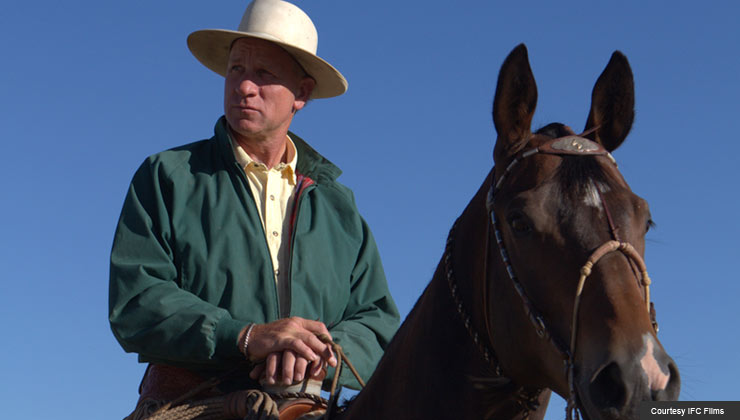AARP Hearing Center


Directed by Cindy Meehl
Rated PG, Runtime: 88 mins.
Stars: Buck Brannaman
On the surface, Buck is a study of horses, but it’s also a portrait of Buck Brannaman, a man who possesses a deep reserve of empathy that allows him to connect with four-legged creatures as well as the two-legged ones that ride them.
See also: A sanctuary for retired thoroughbreds.
The 88-minute documentary follows Brannaman, who inspired the main character in the novel The Horse Whisperer, as he traverses the country, holding four-day clinics for horse owners seeking help with training. In scene after scene, he performs his alluring dance in dusty corrals and wind-swept pastures. Wearing fringed suede chaps and a cordless mike, he offers pearls of wisdom to the animals’ human keepers: “A lot of times, rather than helping people with horse problems,” he says, “I’m helping horses with people problems.” No boisterous Dr. Phil is cowboy Brannaman; his admonitions are often pointed but always quiet, sometimes diluted with smart humor.
During the three months of each year that he’s not on the road, Brannaman, 49, lives with his wife and three daughters on a ranch in Sheridan, Wyoming. A student of the natural-horsemanship pioneers Ray Hunt and Tom Dorrance, Brannaman practices a method of training that calls for encouragement rather than punishment, and for earning a horse’s respect rather than “breaking” it. The film makes it clear that Brannaman applies the method in all his relationships.

































































More on Entertainment
Your Ultimate Guide to This Summer’s Best Movies
Don't miss these upcoming films in theaters and streamingThe 20 Movies We Can't Wait to See in 2023
Get ready for Barbie, Indiana Jones, John Wick, Magic Mike and more
Complete List of AARP’s Movies for Grownups Winners 2023
Brendan Fraser, Michelle Yeoh and Jeff Bridges are among the honorees